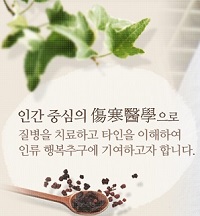- 권한신청
- P-ISSN2287-8696
- E-ISSN2288-744X
- KCI
문합(文蛤)의 기원에 관한 고찰
Bibliographic study about the origin of Meretrix
- 다운로드 수
- 조회수
Abstract
Objective : The purpose of this study was to analyze the origin of Meretrix. Method : Bibliographies about Meretrix were examined focusing on the origin. Based on this analysis, the list and characteristics of the origin-mineral were presented. Results : Based on the Meretrix, the Korean and foreign literature were investigated to make a list, and the process of changing the origin was organized in chronological order. Based on these results, the shape of the currently cultivated or distributed drugs, the status of the distributed drugs and the status of the distributed products were summarized. In addition, the results of summarizing the adverse effects and sensitivities of the efficacy and prestige are as follows: 1. The origin of the Meretrix corresponded to the fall of the mollusks Merethrix metrix L. and Cyclina sinensis Gmelin, which are mollusks belonging to the reference family Veneridae. Their Herbal name is CONCHA CYCLINAE SEU MERETRICIS and they have therapeutic effects on cough, asthma, thirsty and chest heavies. 2. Munhap (文蛤) is a different name of GALLA CHINENSIS. It has therapeutic effects on various skin diseases.Conclusions : The Meretrix means two herbs. The first one is CONCHA CYCLINAE SEU MERETRICIS, the other is GALLA CHINENSIS. They should be used separately according to their clinical use.
- keywords
- Meretrix meretrix. Cyclina sinensis. Concha meretricis seu cyclinae. Mactra veneriformis. Mactra chinensis. Bibliographic. Veneridae. Mollusca. Shell.
참고문헌
1. Moon JJ, Ahn GS, Kim SH, Park JH, Kim DH, Choi DY et al. Shanghanlunjeonghae. Seoul:Publicaton Haneuimunhwasa. 2010:299.
2. Wiktionary. Etymology part of yáng, 陽. 2019 Nov 25. [retrieved 2019 Dec 1]. Available from:URL:http://en.wiktionary.org/wiki/%E9%99%BD
3. Wiktionary. Etymology part of gēng, 更. 2019 Oct 25 [retrieved 2019 Oct 25]. Available from:URL:http://ko.wiktionary.org/wiki/%E6%9B%B4
4. Chijeong GS . Yakjingsokpyeon. Beijing :Hagwon Publishing house. 1998:9-10.
5. State administration of traditional chinese medicine of the people's republic of China. Zhonghuabencao. Vol 9. Shanghai:Shanghai scientific and technical publishers. 1999:89-92.
6. Jin H. Sinnongbonchokyung. Beijing :Hagwon publishing house. 2007:219.
7. Joo JP, Wang WW, Yang GS. Signature certificate of heavy medicine. Beijing:Publisher of a historical place. 2007:2677-82.
8. Lee SJ. Bonchogangmok. Seoul:Gomunsa. 1985:909-11.
9. Jiangsu xinyixueyuan. Zhongyao dacidian Vol 1. shanghai:Shanghai scientific and technical publishers. 1978:288-91,356.
10. National committee of pharmacopoeia committee. Chinese people's republic of China treaty. Beijing:China pharmaceutical science publishing house. 2010:62,322-3.
11. Ministry of food and drug safety. Korea Pharmacopoeia. Seoul:Dongwonmunhwasa. 2002:150.
12. Textbook Committee of Herbology. Herbology. Seoul:Yeonglimsa. 2011:681.
13. Ministry of food and drug safety. Korea Pharmacopoeia. Seoul:2017:226-7,444.
14. State administration of traditional chinese medicine of the people's republic of China. Zhonghuabencao Vol 5. Shanghai:Shanghai scientific and technical Publishers. 1999:86-91.
15. Joo JP, Wang WW, Yang GS. Signature certificate of heavy medicine. Vol 1. Beijing:Publisher of a historical place. 2007:401-8.
16. Yamada G. How did Traditional chinese medicine start. Seoul:Science Books. 2012:148-9.
17. Jiangsu xinyixueyuan. Zhongyao dacidian Vol 1. shanghai:Shanghai scientific and technical publishers. 1978:288-91,356.
- 다운로드 수
- 조회수
- 0KCI 피인용수
- 0WOS 피인용수


